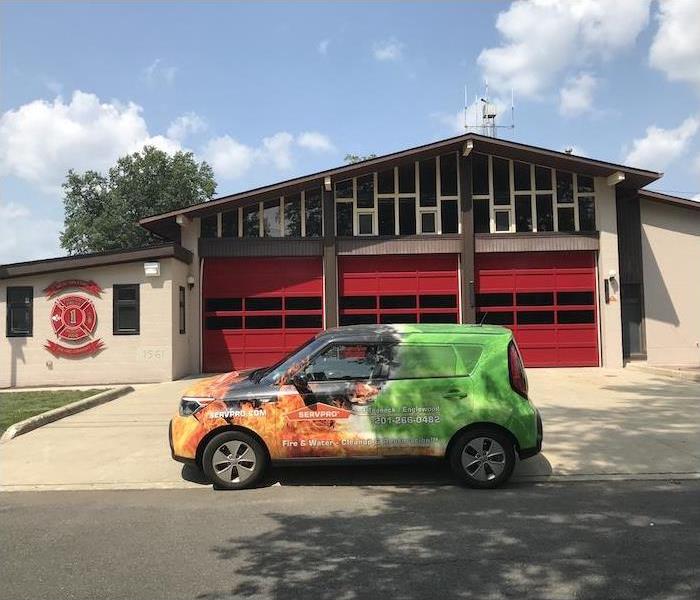The Story Soot in Your Teaneck Home Tells About Fire Damage
3/30/2023 (Permalink)
 Soot damage can be overwhelming. Contact SERVPRO to remediate the damage that smoke and fire has been left behind in your Teaneck home.
Soot damage can be overwhelming. Contact SERVPRO to remediate the damage that smoke and fire has been left behind in your Teaneck home.
What SERVPRO Focuses on in Your Teaneck Home During Fire Restoration?
After a fire at your Teaneck home, soot accumulation is expected. However, you may not clearly understand variations like the amount of residue produced or spread patterns mean. Soot tells a story after the fire, including how intense it was and the types of materials burnt. A professional restoration team can rely on their superior understanding of soot residues to manage fire damage better or establish the resources needed for restoration.
In your Teaneck home, fire damage can be localized in situations like a trashcan catching fire or a stove flaring up. It can also spread widely when various items or structural materials ignite. The number of items or materials left unsalvageable may be minimal with a localized fire since flames and heat are contained. However, soot deposits still spread widely, whether the incident is localized or otherwise. When our SERVPRO technicians inspect your house, we can quickly identify what items are salvageable or not.
Typically, items are rendered unsalvageable when heat or flames damage them significantly. Intense heat and flames can melt parts or consume entire materials. Therefore, household appliances, furniture, and other items are among those you may need to replace. Soot residues may seem less harmful but can still force you to replace items. Accumulation on surfaces causes heavy soiling and staining, while penetration inside appliances can cause varied yet severe problems, including electrical shorts and overheating components, which render the item unusable. Therefore, having a better understanding of the fire residues left in your house can help you change the outcome of the incident.
Some Things You Might Not Know About Fire Residues:
- Soot amount might not indicate fire size
- Fire residues are not as uniform as they seem
- Low or high heat levels can lead to cleaning difficulty
Although soot is one of the expected results of a house fire, what you find after an incident might seem unusual. You may expect a low amount of residues if it is a small fire and vice versa. However, on inspecting the damaged site, the results might prove otherwise. A seasoned restoration team from SERVPRO expects such contradictions since our technicians study combustion processes to understand restoration procedures better.
The Combustion Story
Combustion is a chemical process that turns solid materials into gas. The reaction is fueled by oxygen and gives off significant heat. Incomplete combustion leaves remnant materials, including the carbon particles you identify as soot and aerosols. The quantity or speed at which residues are produced varies, resulting in distinctive solid deposits.
Typical unique outcomes:
- Heat lines
- Concealed soot
- Impinged soot
Heat lines are distinctive boundaries that appear horizontally on wall surfaces with one side, usually, the upper one having a significant accumulation of soot residues compared to the lower one. They occur because of temperature differences between air masses during the fire. The hotter smoke concentrates closer to the ceiling while the colder air sinks to the bottom, causing the unusual residue accumulation on the surfaces they touch. When our SERVPRO technicians observe heat lines, we know that the fire was scorching hot, and cleaning residues above the heat line would be difficult because aerosols and residues might be baked-on.
SERVPRO of Teaneck / Englewood understands that each fire damage incident has a unique storyline and strives to find solutions that address each "Like it never even happened." You can reach us at (201) 266-0482.






 24/7 Emergency Service
24/7 Emergency Service